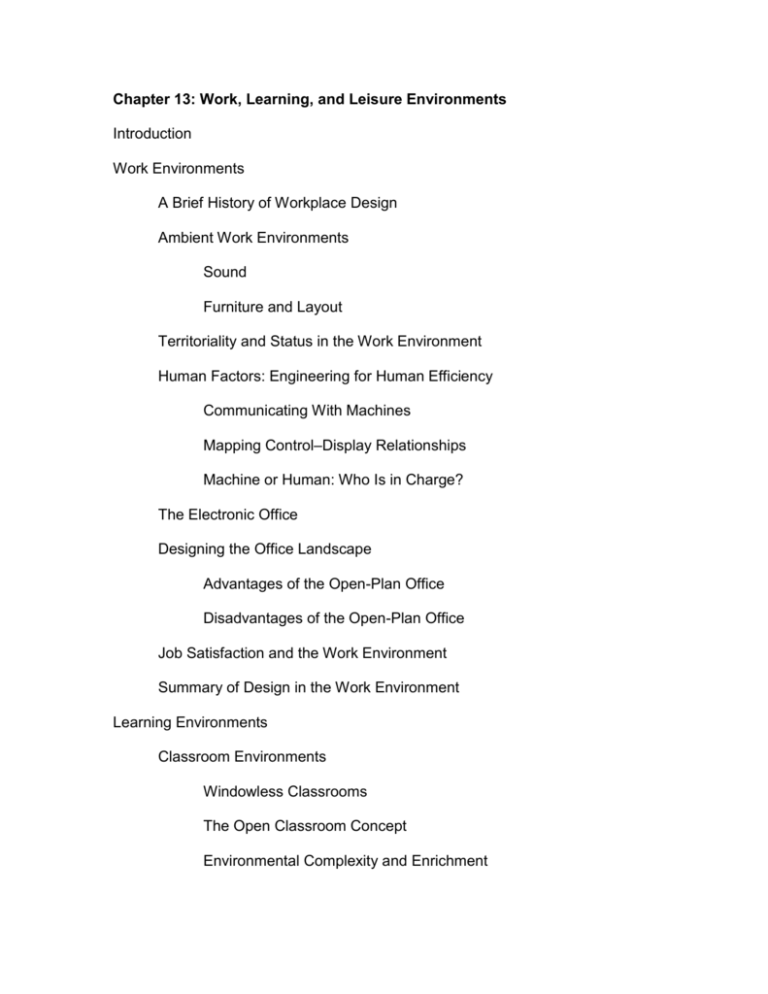Chapter 13: Work, Learning, and Leisure Environments
advertisement

Chapter 13: Work, Learning, and Leisure Environments Introduction Work Environments A Brief History of Workplace Design Ambient Work Environments Sound Furniture and Layout Territoriality and Status in the Work Environment Human Factors: Engineering for Human Efficiency Communicating With Machines Mapping Control–Display Relationships Machine or Human: Who Is in Charge? The Electronic Office Designing the Office Landscape Advantages of the Open-Plan Office Disadvantages of the Open-Plan Office Job Satisfaction and the Work Environment Summary of Design in the Work Environment Learning Environments Classroom Environments Windowless Classrooms The Open Classroom Concept Environmental Complexity and Enrichment Density Day Care and Preschool Settings Libraries Multiple Functions Orientation and Wayfinding Visitor Behavior in Museum Environments Wayfinding Exploration Fatigue in Museum Exploration Management of Natural Lands for Leisure The Meaning of Leisure Characteristics of Recreationists The Challenge of Land Management Can We Love Our Lands Too Much? What Does Recreation Management Manage? How Much Wilderness Is Enough? Prelude to Preservation Summary: Leisure and Recreation Environments











